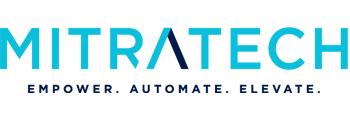Pre-employment drug testing can feel overwhelming for many employers. What are the rules? Do certain drugs matter more? What doesn’t matter at all? What can you let slide?
The hard part is that sometimes you don’t get to choose the answers to those questions. You’re bound by industry (healthcare or education, for example), job title, state laws, federal laws, or something else entirely.
This is why it is so essential to stay informed. Drug testing isn’t just about compliance, though that is a big piece. It’s a crucial step in ensuring a safe and productive workplace.
By implementing effective strategies, you can create an environment that prioritizes employee well-being while protecting your business interests.
Let’s delve into the best practices for pre-employment drug testing and discover how to optimize this process for success!
The Importance of Drug Testing
Pre-employment drug testing is crucial for maintaining a safe and productive workplace. It helps employers identify potential substance abuse issues before hiring, reducing the risk of accidents and injuries on the job. A drug-free environment fosters better teamwork and boosts overall morale among employees. When everyone knows that their colleagues are working at their best, it leads to improved performance.
Moreover, drug testing can protect your company’s reputation. Clients and customers appreciate businesses that prioritize safety and integrity, which can ultimately lead to increased trust in your services or products.

The Best Practices for Pre-Employment Drug Testing
and federal laws to ensure compliance. Understand the specific regulations that apply to your industry, as they can vary widely. There may be different rules for alcohol testing, DOT laws, reasonable suspicion, and so much more.
It’s also important to remember that communication is key when introducing a drug testing policy. Clearly outline expectations for candidates during the hiring process. Transparency fosters trust and sets a professional tone from the beginning. It also ensures that your condition of employment regulations are consistent across the board.
Perhaps most important is utilizing reliable testing methods and certified laboratories to obtain accurate results. Consider incorporating technology for seamless scheduling and tracking of tests. This streamlines the process and enhances efficiency within your recruitment efforts.
Let’s dive a little deeper into each of these areas.
State Laws and Compliance
State laws regarding pre-employment drug testing can vary significantly. Some states have strict regulations, while others allow employers more flexibility. It’s crucial to stay informed about the specific rules in your area. It can impact everything from when you can perform a random drug testing to what you test new hires for. Often, companies will look to states like California to determine their employment drug testing laws.
Employers must ensure their drug testing policies align with state legislation. This includes understanding which substances are tested and any required notices before testing occurs. Noncompliance with state laws can lead to legal complications or penalties for businesses. Therefore, researching local regulations is essential for creating a compliant and fair pre-employment drug testing program.
Often, it’s best to work with a background check company and a drug testing company that understands compliance better than most private employers will.
Federal and Industry-Specific Laws
Understanding federal laws governing pre-employment drug testing is another non-negotiable.
The Drug-Free Workplace Act encourages businesses to maintain a safe, drug-free environment. Compliance with these regulations helps minimize legal risks and safety risks. The Department of Transportation, for example, has certain regulations in place, but so may the Department of Education. It is important to know these federal laws while screening job applicants. Then, it becomes equally important post-accident or a situation where someone is suspected of drug abuse.
Industry-specific laws also play a significant role in shaping drug testing practices.
For example, transportation and aviation sectors enforce stricter guidelines due to safety concerns. Employers must be aware of these nuances when developing their policies. Failing to comply with federal or industry regulations can lead to penalties or lawsuits. Staying informed about changing legislation ensures that your organization remains compliant and protects its interests effectively.
It can also impact things like workers’ compensation, rehabilitation programs, and more, since they have implications in federal law.
Types of Drug Tests
There are several types of drug tests commonly used in pre-employment screening. Urine tests are the most frequent choice due to their cost-effectiveness and ability to detect a wide range of substances. They can reveal drug use within the past few days. Saliva tests (oral fluid) have gained popularity for their convenience and non-invasive nature. These can identify recent substance use, typically within a few hours to a couple of days after consumption. Hair follicle testing is another option, offering a longer detection window. This method can trace drug usage over months, making it useful for assessing an applicant’s long-term habits.
What Shows Up In Drug Testing Results?
Drug tests can detect a wide range of prescription and illegal drugs. The most commonly tested drugs include:
- Amphetamines
- Methamphetamines
- Cocaine
- Marijuana (Cannabis and THC)
- Opiates
- Phencyclidine (PCP)
- Certain prescription medications
In addition to these drugs, drug tests may also detect other substances, such as:
- Barbiturates: These are a type of sedative-hypnotic drug.
- Benzodiazepines: These are a type of anti-anxiety medication.
- Ecstasy/Molly: This is a synthetic drug that can have stimulant and hallucinogenic effects.
- Methadone: This is a medication used to treat opioid addiction.
- Steroids: These are synthetic hormones that can be used to increase muscle mass.
The specific drugs that are tested for will vary depending on the type of drug test and the reason for the test. For example, pre-employment drug tests typically test for a wider range of drugs than post-accident drug tests.
It is important to note that drug tests can only detect the presence of drugs in your system. They cannot determine how recently you used the drug or how much you used.
Mitigating Risks Through Technology and Expertise
Leveraging technology in pre-employment drug testing can significantly enhance accuracy and efficiency. Automated systems streamline the scheduling and tracking of tests, reducing human error. Furthermore, using advanced screening methods helps identify potential substance abuse issues early on. This proactive approach protects workplace safety and fosters a healthier work environment.
Note that expertise plays a crucial role in interpreting results. Collaborating with certified professionals ensures compliance with laws while providing guidance. Combining technology and expert insights creates a robust framework for effective drug testing.
Developing an Effective Drug Testing Policy
An effective drug testing policy starts with clear objectives. Define the purpose of testing, whether it’s for safety, compliance, or maintaining a productive work environment. This clarity helps set the tone for your approach. Engage employees in developing the policy. Gather feedback and address concerns to foster trust and transparency. Employees are more likely to accept a policy they helped create. Regularly review and update your drug testing policy to align with changing laws and workplace dynamics.
A flexible approach ensures compliance while adapting to emerging challenges in your industry.
Employee Drug Testing Procedures
Establishing clear employee drug testing procedures is essential. Here’s a great place to start:
- Start by determining when tests will be administered, such as before hiring or after specific incidents.
- Ensure that candidates are aware of these policies upfront.
- Next, communicate the process for sample collection. This might include guidelines on where and how samples will be taken to maintain integrity and reduce anxiety among employees.
- Train your HR team in handling results responsibly. They should know how to manage test outcomes while respecting employee rights and confidentiality.
- Stay updated!
Ensuring Confidentiality and Compliance
Confidentiality is crucial in pre-employment drug testing. Protecting candidates’ personal information fosters trust and maintains a positive company image. Ensure that all data collected during the process is securely stored and accessed only by authorized personnel. Compliance with legal standards also plays a vital role.
Familiarize yourself with state and federal regulations governing drug testing to avoid potential liabilities. Regularly review your procedures to ensure they align with evolving laws. Training staff on confidentiality practices can further enhance compliance efforts.
Employees should understand their responsibilities regarding sensitive information, minimizing risks of accidental disclosure or mishandling.
Post-Testing Procedures
After the drug testing process, it’s crucial to handle results appropriately. Ensure that any positive findings are verified through a confirmation test. This step minimizes errors and protects both the candidate and your organization. Communicating results should be done sensitively. Inform candidates promptly about their status while maintaining confidentiality throughout the process. Transparency can foster trust.
If an individual tests positive, provide them with information on how they can appeal or discuss their results. Offering guidance shows respect for their rights and supports a fair evaluation process moving forward.
Got the resources to meet return-to-work challenges?
Mitratech offers the right solutions and support to help you pivot to meet post-pandemic demands.


